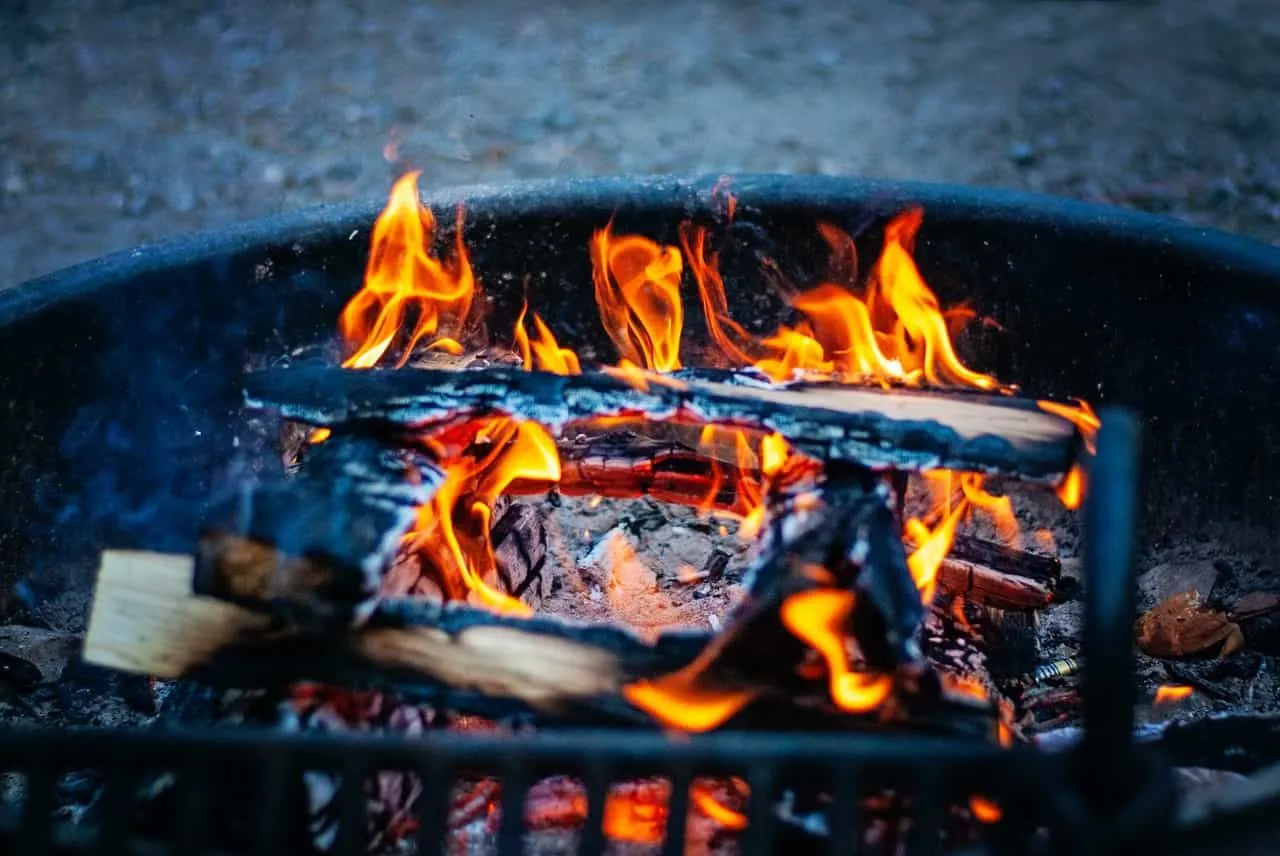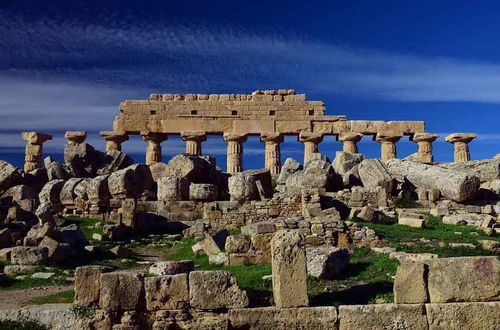FOR ALL AGES
Looking to brush up your knowledge of Ancient Greek mythology?
You'll likely have heard of Zeus, the king of all the Ancient Greek gods. But have you heard about the goddess Hestia?
Hestia was goddess of the hearth and goddess of the home, and Hestia's siblings were Zeus, Chiron, Poseidon, Hades, Demeter, and Hera. As with most Ancient Greek gods and goddesses, Hestia's early story is dramatic, but myths about Hestia are less well known than her famous siblings. After reading this article, however, you'll be an expert on the goddess Hestia.
Don't forget to check out our Poseidon facts and Facts About Apollo, too.
Learn about Hestia's place in Ancient Greek mythology, and why she rejected the marriage proposals of both Poseidon and Apollo.
1. Hestia was the eldest daughter of Cronus and Rhea, both of whom were Titans, and sister to Poseidon, Demeter, Hades, Hera, Chiron, and Zeus.
2. Hestia is considered one of the Twelve Olympian gods, but sometimes is swapped out for Dionysus, depending on the myth's author.
3. Her father Cronus swallowed all of his children: as Hestia was the first born, she was consumed first.
4. However, when Zeus fought back against his father, causing Cronus to spit his children back up again, Hestia was the last to emerge. Hestia myths, therefore, celebrate her as being both the oldest and youngest of her siblings.
5. Hestia joined her siblings' battle against Cronus and Rhea and the rest of the Titans, taking up her place at Mount Olympus as goddess of the hearth after defeating their parents.
6. Apollo and Poseidon wanted to marry Hestia, but she rejected both of them, swearing herself instead to remain a virgin goddess, like Athena and Artemis.
7. Hestia therefore never married and had no children.
8. Hestia's virginal status and her naturally calm, gentle nature, resulted in her being one of the lesser-known greek goddesses involved in fewer myths and stories.
9. As Hestia was the virgin goddess, she is frequently considered the opposite of Aphrodite, the Ancient Greek goddess of love.
10. Neither of Homer's works, The Iliad, and The Odyssey, mention Hestia, but poets such as Ovid do refer to her, and she is mentioned in Homeric Hymn 24 and 29.

Do you know the Roman equivalent of the Greek goddess Hestia? Read on to learn about her characteristics and responsibilities.
11. Hestia is the Ancient Greek goddess of the hearth, home, and family.
12. Hestia's symbols are therefore the hearth, the fire, and the kettle.
13. The word 'Hestia' literally means 'hearth' in Greek, which is the floor of the fireplace.
14. The Roman name of Hestia, however, is Vesta.
15. Hestia's Roman equivalent had similar functions to the Greek goddess, as the embodiment of Rome's domestic and public hearths and families.
16. The Greek goddess Hestia typically lives on Mount Olympus, home of the Greek gods, but can also be found at Delphi.
17. Hestia was responsible for maintaining the hearth and fire of Mount Olympus. The fire was used for cooking the fatty portions of animal sacrifices that were made to the gods, and keeping the home of the gods warm.
18. Hestia also taught people how to build a home, and helped to keep family peace.
19. As goddess of hearth and home, Hestia also personified the fire burning in every Greek household.
20. She represented communal security and family, and her dominion was domestic life.
21. The goddess is characterised as forgiving and kind, and the most gentle and mild of all the gods.
22. Hestia's peace-loving nature also resulted in her occasionally being characterised as mild or cold, which were sometimes considered weaknesses.
23. As a result of her non-confrontational nature, Hestia is typically pictured as a modest woman, usually wearing a veil and robe, holding a flowered branch to symbolise peace, and sometimes by a large fire.
24. There is a Byzantine tapestry called the Hestia Tapestry which was made in Egypt in the 6th century AD. It shows Hestia goddess of hearth and home as a fruitful, generous figure, with a headdress and earrings made of pomegranates.

Learn about how Hestia was worshipped at the public hearth.
25. Although Hestia the goddess is less famous than her siblings, both public and private worship of her was common.
26. Ancient Greek people could worship Hestia at any temple, regardless of which god to which the temple was dedicated.
27. Hestia herself had very few temples dedicated to her, but there were two at Sparta and Ermioni.
28. However, every private and public hearth was considered Hestia's sanctuary.
29. Every city also had a public hearth that was Hestia's sacred space: the fire was never allowed to go out.
30. Equally, if a family accidentally extinguished their domestic hearth fire, this represented a failure of religious and domestic care.
31. If the hearth fire was deliberately extinguished, it had to be done in ritual only, and it had to be re-lit with rituals of purification, renewal, and completion.
32. When a new colony was established, Hestia's fire would be taken from the hearth in the prytaneion (the town hall) and carried to the new city to light its hearths.
33. Hestia received the first offering of every sacrifice made in the home - often families poured sweet wine in her name and gave her the richest portion of food.
34. It is also understood that Hestia's mythical status as the firstborn of Rhea and Cronus resulted in the tradition of Hestia being given the first offering of any sacrifice.
35. Children were also accepted into a family by being presented at Hestia's hearth, ensuring the blessing of the goddess.
Here at Kidadl, we have carefully created lots of interesting family-friendly facts for everyone to enjoy! If you liked our suggestions for facts about Hestia, then why not take a look at Chichen Itza facts, or Zodiac facts.
Read The Disclaimer
At Kidadl we pride ourselves on offering families original ideas to make the most of time spent together at home or out and about, wherever you are in the world. We strive to recommend the very best things that are suggested by our community and are things we would do ourselves - our aim is to be the trusted friend to parents.
We try our very best, but cannot guarantee perfection. We will always aim to give you accurate information at the date of publication - however, information does change, so it’s important you do your own research, double-check and make the decision that is right for your family.
Kidadl provides inspiration to entertain and educate your children. We recognise that not all activities and ideas are appropriate and suitable for all children and families or in all circumstances. Our recommended activities are based on age but these are a guide. We recommend that these ideas are used as inspiration, that ideas are undertaken with appropriate adult supervision, and that each adult uses their own discretion and knowledge of their children to consider the safety and suitability.
Kidadl cannot accept liability for the execution of these ideas, and parental supervision is advised at all times, as safety is paramount. Anyone using the information provided by Kidadl does so at their own risk and we can not accept liability if things go wrong.
Kidadl is independent and to make our service free to you the reader we are supported by advertising.
We hope you love our recommendations for products and services! What we suggest is selected independently by the Kidadl team. If you purchase using the buy now button we may earn a small commission. This does not influence our choices. Please note: prices are correct and items are available at the time the article was published.
Kidadl has a number of affiliate partners that we work with including Amazon. Please note that Kidadl is a participant in the Amazon Services LLC Associates Program, an affiliate advertising program designed to provide a means for sites to earn advertising fees by advertising and linking to amazon.
We also link to other websites, but are not responsible for their content.
Was this article helpful?



Browse Category



We’ll send you tons of inspiration to help you find a hidden gem in your local area or plan a big day out.



Check your inbox for your latest news from us. You have subscribed to:
Remember that you can always manage your preferences or unsubscribe through the link at the foot of each newsletter.